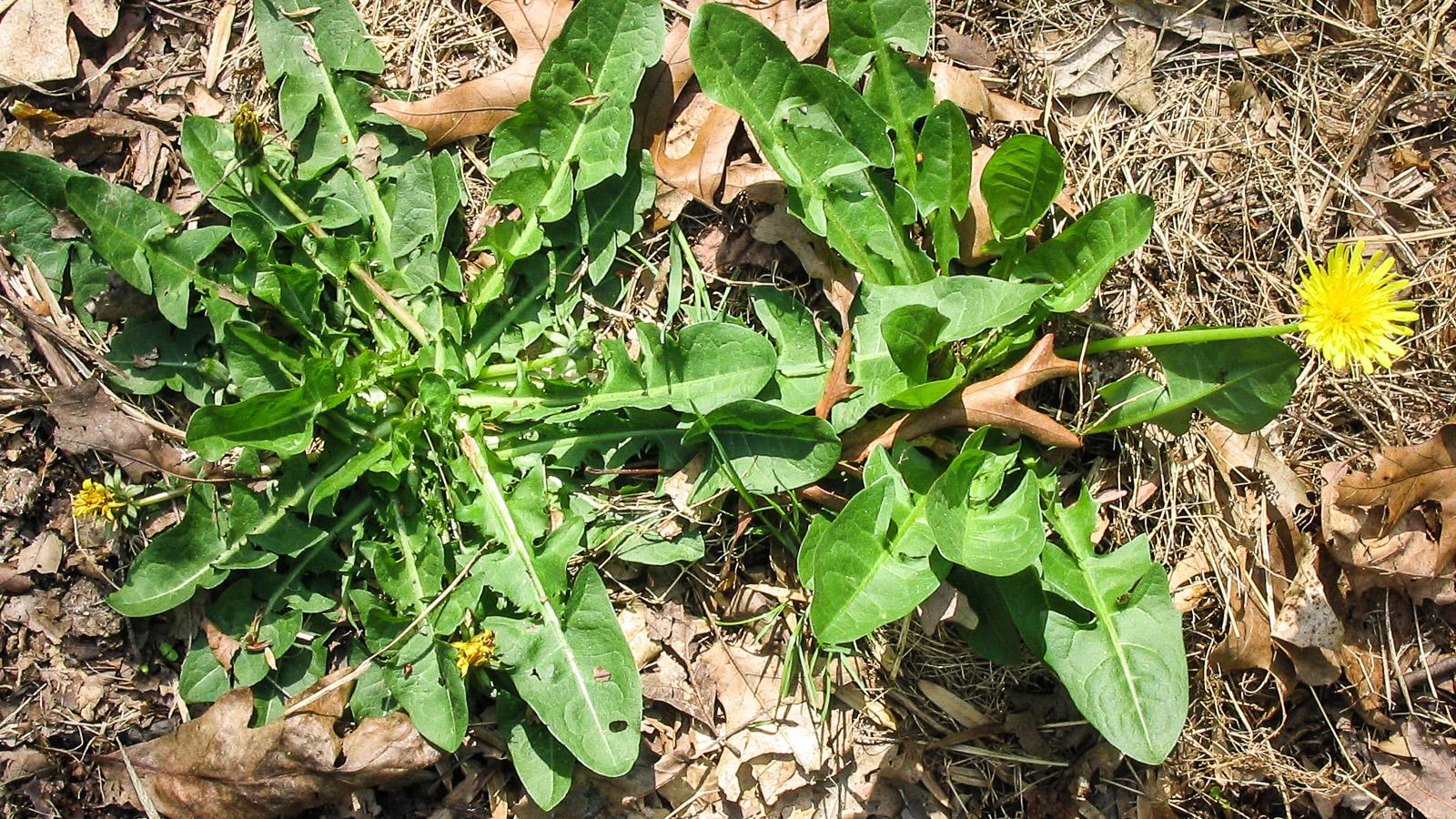Life cycle
Perennial; rosette of leaves 3- to 10-inches long with a high degree
of leaf variability ranging from deeply cut to almost entire. Milky sap when broken.
Yellow ray flowers borne on leafless, hollow stalks.
Reproduction
Reproduces by wind-blown seed; up to 15,000 seeds per plant; fleshy taproot survives cold weather to grow in spring.

Photo: Rachel Rhodes, UME
Conditions that favor growth
Mowing the lawn too short.
Management in lawns
Lawn care practices
Maintain healthy, dense turf that can compete and prevent weed establishment.
Mechanical management
Using an appropriate weeding tool that digs deep into the soil to remove the taproot is the primary means of mechanical weed. This is a viable option at the beginning of an infestation and on young weeds. Hand pulling when the soil is moist makes the task easier. Mow to remove the flowers before they mature and form seeds.
Manage Weeds Without Chemicals
Chemical treatment in lawns
If you choose this option, spot treat weeds with a liquid, selective, postemergent, broadleaf weed killer applied when weeds are actively growing. Look for a product with one or more of the following active ingredients: 2, 4-D, MCPP (mecoprop), Dicamba*, or Triclopyr.
*Do not spray herbicides containing dicamba over the root zone of trees and shrubs. Roots can absorb the product possibly causing plant damage. Refer to the product label for precautions.
